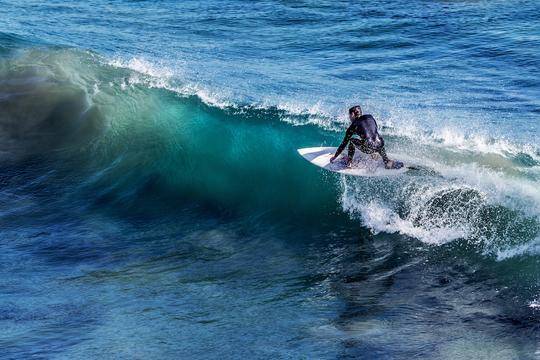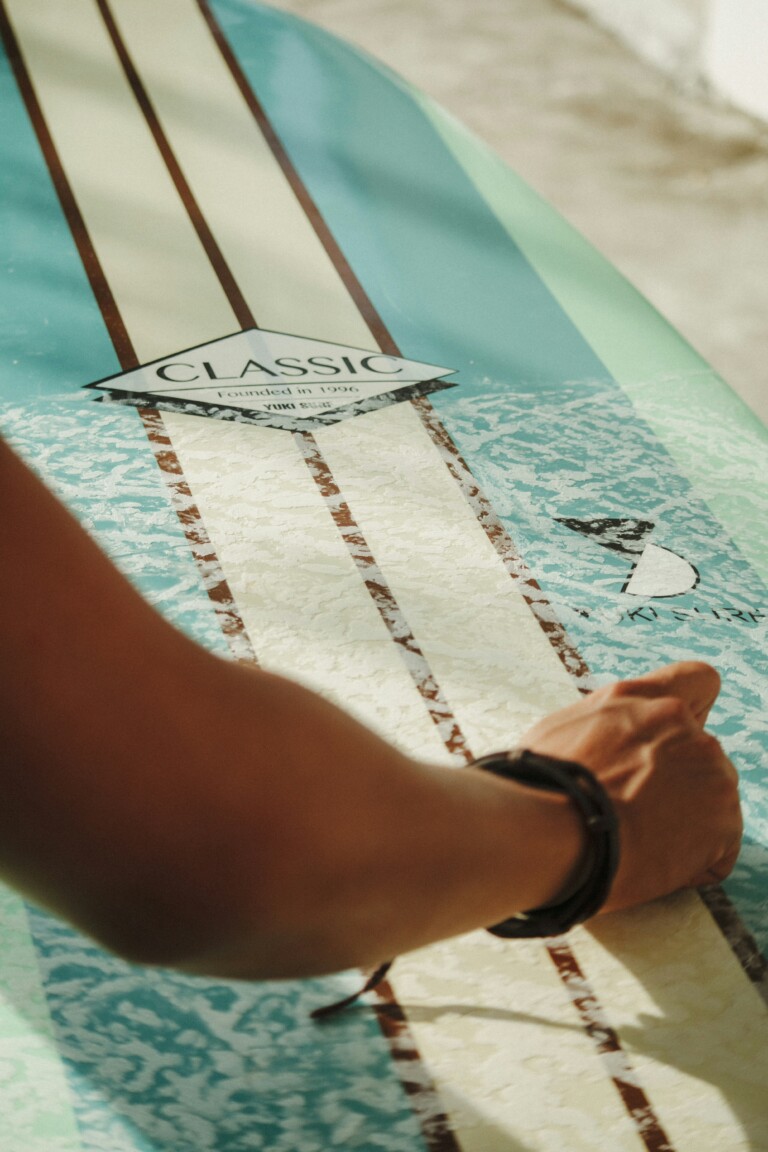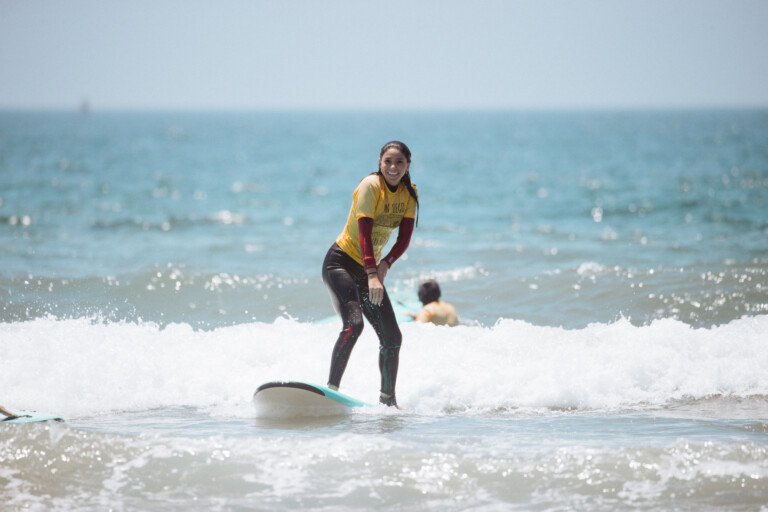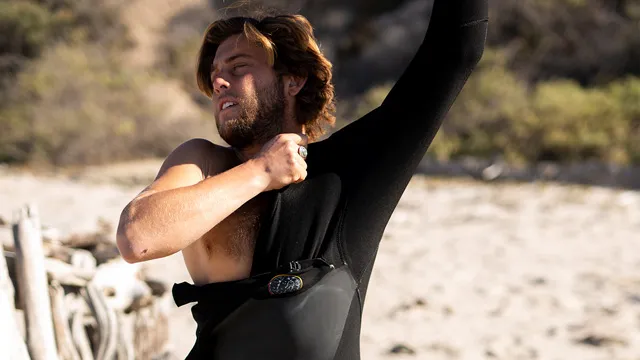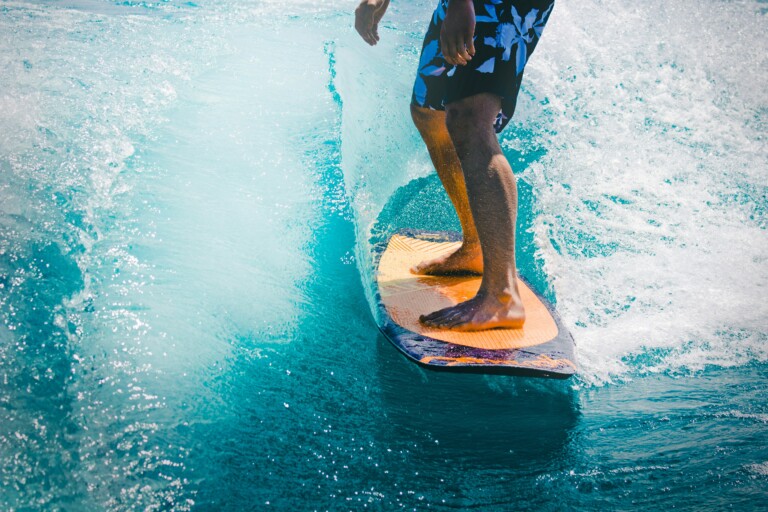If the wave you’re catching is small and crashing slowly, it will forgive you if you choose the wrong position at take-off. The mellow wave will give you time to adjust, to catch up, or to stall, to reach the right spot on the wave face. On the other hand, a large, fast wave, especially one crashing from top to bottom, offers no room for error. A few inches in positioning can make the difference between the ride of your life and a wipe-out. These cases call for the advanced skill of knowing exactly how to position yourself with respect to the peak at take-off.
TAKING OFF PRECISELY AT THE PEAK
Common sense dictates that you should take off where the wave is steepest and first begins to break: its peak. In most situations, this is good advice. However, you may notice that advanced surfers often diverge from this rule of thumb, playing with their position on the peak to optimize their ride or otherwise achieve a maneuver, such as a deep barrel ride, that might not otherwise be possible.
TAKING OFF ON THE SHOULDER
If the wave is the type that suddenly jacks up before initially breaking, you may find that it is nearly impossible to take off precisely at the peak without getting thrown “over the falls.” Whether this will happen to you depends largely, of course, on your skill level. But if you have any doubts, the safe bet in this situation is to take off on the near shoulder, “in front” of the peak, where the take-off and subsequent ride may be more manageable.
TAKING OFF “BEHIND” THE PEAK
Suppose you are taking off to the right. Naturally, you would think that the best spot to position yourself in would be either on the peak itself or the right shoulder. However, advanced surfers often choose a different tactic, in this case, taking off “behind” the peak, that is, on the left shoulder, to achieve a faster, longer or otherwise more dramatic ride. If the peak is breaking from top to bottom, taking off “behind” the peak, in this case, would result in an immediate barrel ride as the surfer ducks beneath the crashing peak itself on their way to the right. Proceed with caution.
As your surfing skills develop, you’ll inevitably find yourself experimenting with your precise position on the wave face at take-off. Of course, aligning yourself with the peak is an excellent rule of thumb, especially when the wave is slow-crashing and forgiving. However, if the peak jacks up and the wave breaks quickly, you may want to position yourself slightly in front or behind the peak, depending on your skill level and your goal for the ride at hand.











